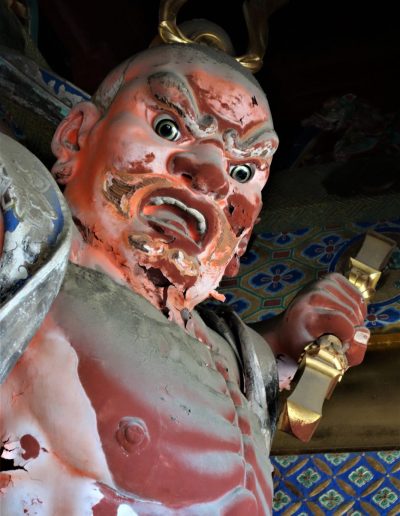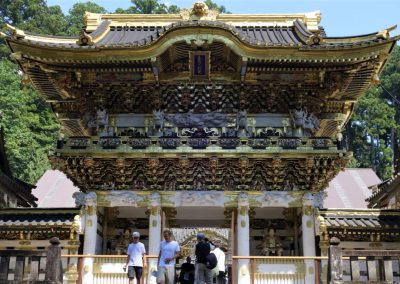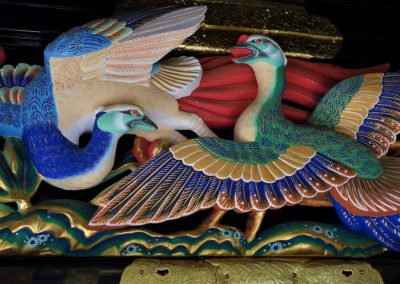Friday was spent exploring Nikko’s World Heritage shrines and temples. Old Shin-kyo Bridge spans the river near the entrance.
We spent most of our time in the Tosho-gu Shrine which is by far the largest. It includes the tomb of Tokogawa Ieyasu, founder of the Tokugawa Shogunate. Climbing stone steps from the river you pass through a massive stone torii (entrance gate) and see a giant pagoda.
Next is the purification building (Omizuya) which has a gorgeous ceiling. Beyond this a smaller torii leads from the courtyard further into the shrine. It’s exciting to feel yourself being pulled through the complex towards the next set of highlights. Through the torii you can see a large gate in the middle with bell and drum towers to the left and right.
Yomei-mon, the Sunset Gate, is most certainly a highlight. It has every form of ornamentation you can think of. It’s said that those who built it were worried it’s perfection would offend the gods, so they placed one pillar upside down as a deliberate mistake.
The degree of decoration and ornamentation within the inner section of the shrine is intoxicating. Gilt and bright colours, burnt wood and matt finishes.
To get to Ieyasu’s tomb, called Okumiya, you exit through the Sakashita-mon (gate). The mantle has a carving of a cat called Nemuri-neko which is much loved by Japanese pilgrims. Exiting the gate you get a nice view over the roofs of the building complex. Hope they have good fire prevention plans in place. It’s a giant tinder box.
It’s quite a climb to Okumiya, and being summer it was hot going uphill. It’s cool and tranquil when you get there. The shogun’s tomb is very simple, in contrast to the shrines and temples below.
We then left Tosho-gu and headed to the next shrine. It’s pleasant to walk between them, providing a break from the intense decoration. Next we visited Futasaran-jinja. Founded in 1619 it’s the oldest shrine in Nikko. It is much smaller and less grandiose than Tosho-gu. The relative simplicity felt calm and peaceful.



























